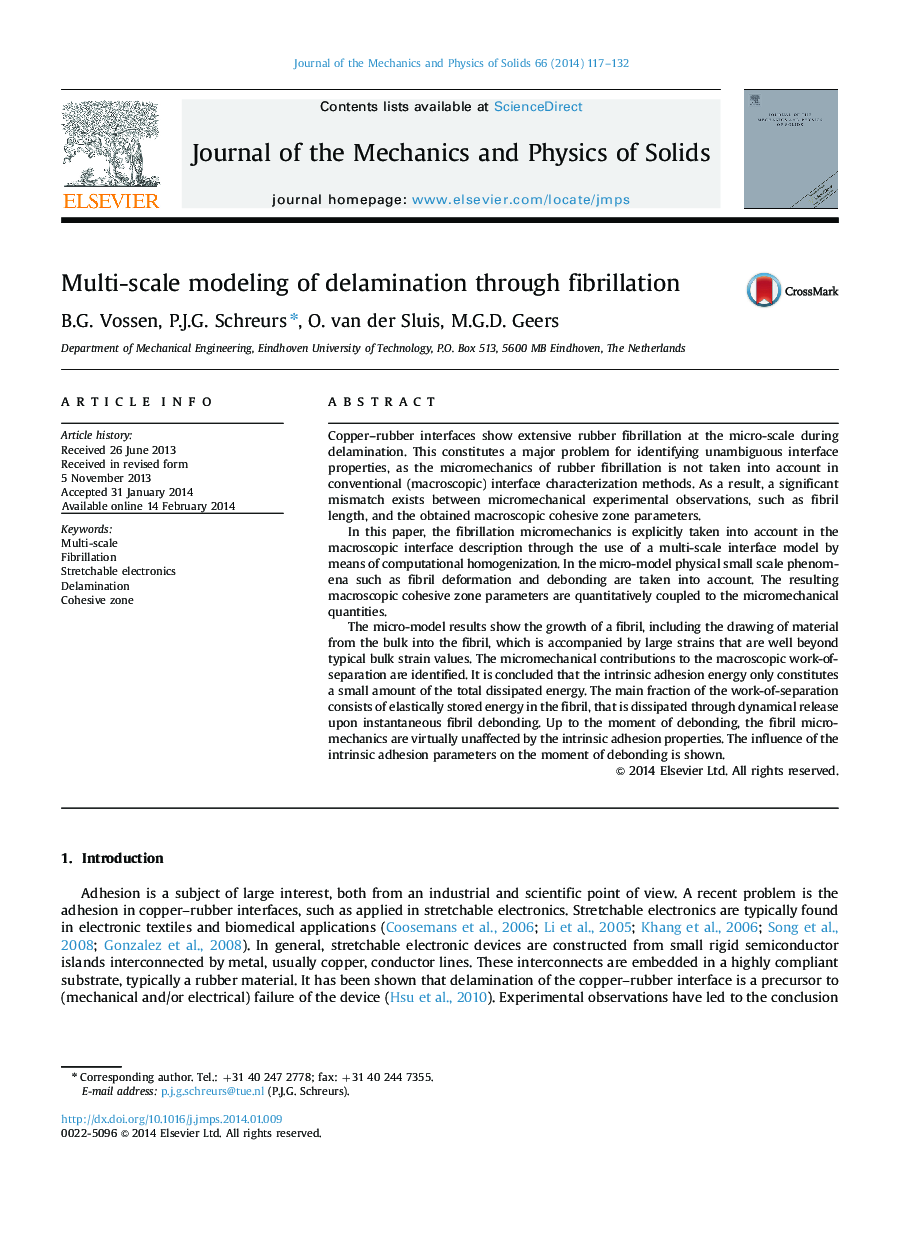| Article ID | Journal | Published Year | Pages | File Type |
|---|---|---|---|---|
| 797326 | Journal of the Mechanics and Physics of Solids | 2014 | 16 Pages |
•The micromechanics of fibrillation is taken into account in the macroscopic interface behavior.•Dynamical release of elastically stored energy contributes significantly to the overall work-of-separation.•The intrinsic adhesion peak traction controls the fibrillation process.
Copper–rubber interfaces show extensive rubber fibrillation at the micro-scale during delamination. This constitutes a major problem for identifying unambiguous interface properties, as the micromechanics of rubber fibrillation is not taken into account in conventional (macroscopic) interface characterization methods. As a result, a significant mismatch exists between micromechanical experimental observations, such as fibril length, and the obtained macroscopic cohesive zone parameters.In this paper, the fibrillation micromechanics is explicitly taken into account in the macroscopic interface description through the use of a multi-scale interface model by means of computational homogenization. In the micro-model physical small scale phenomena such as fibril deformation and debonding are taken into account. The resulting macroscopic cohesive zone parameters are quantitatively coupled to the micromechanical quantities.The micro-model results show the growth of a fibril, including the drawing of material from the bulk into the fibril, which is accompanied by large strains that are well beyond typical bulk strain values. The micromechanical contributions to the macroscopic work-of-separation are identified. It is concluded that the intrinsic adhesion energy only constitutes a small amount of the total dissipated energy. The main fraction of the work-of-separation consists of elastically stored energy in the fibril, that is dissipated through dynamical release upon instantaneous fibril debonding. Up to the moment of debonding, the fibril micromechanics are virtually unaffected by the intrinsic adhesion properties. The influence of the intrinsic adhesion parameters on the moment of debonding is shown.
